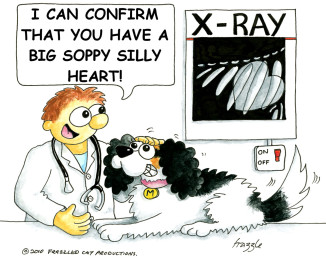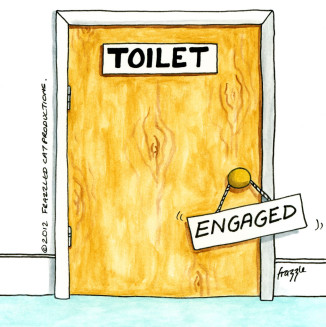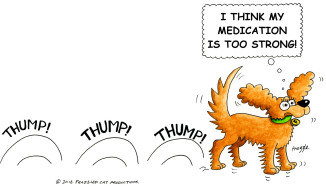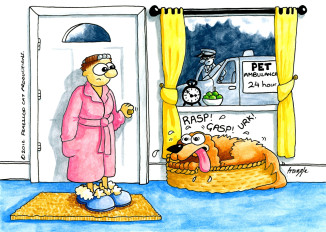Types of Treatment

In general cardiologists do not medicate cavaliers with low-grade MVD murmurs. As yet there is no cure for MVD, but there are treatments that not only greatly improve your Cavalier’s quality of life but can also extend their lifespan. Medical treatments may consist of some or all of the following:
- Diuretics that remove excess fluid from the lungs or abdomen
- Medicines that ‘open up’ constricted blood vessels, so reducing the work your dog’s weakened heart has to do
- Medicines that improve the strength, or rate of, your dog’s heart beat. This will improve the amount of blood pumped around the body
Helping Your Cavalier
 Ask your vet for a referral to a cardiologist for a specialist’s opinion. A cardio will give you far more detail of what is going on and what to do next. The Cardio will be familiar with the array of medications available and when/how to adjust them to suit. The extent of the disease will determine the medication. To reduce fluid around the lungs, which can cause coughing, a diuretic may be prescribed. Diuretics could make your dog pee… A LOT!!! The peeing is normal but should calm down once the excess fluid is reduced.
Ask your vet for a referral to a cardiologist for a specialist’s opinion. A cardio will give you far more detail of what is going on and what to do next. The Cardio will be familiar with the array of medications available and when/how to adjust them to suit. The extent of the disease will determine the medication. To reduce fluid around the lungs, which can cause coughing, a diuretic may be prescribed. Diuretics could make your dog pee… A LOT!!! The peeing is normal but should calm down once the excess fluid is reduced.
Whether or not medication has been recommended, lifestyle changes have a role. It may be necessary to change your dog’s exercise regime; in some cases this may mean complete rest, in others a controlled exercise regime. Your vet may also recommend dietary changes. Getting excess weight off is critical, every extra ounce over weight means the heart has to work harder to supply the extra blood vessels. The heart will work less efficiently, causing your Cavalier to struggle.
 Your Cavaliers heart rate should be 70-120 beats per minute. To monitor your Cavalier’s heart rate simply place your hand on their chest, count the heart beats for 15 seconds. Multiply the number of heart beats by four to get the beats per minute. A heart rate taken at home, where the dog is comfortable and not stressed, can be more indicative of a true resting heart rate than one taken at the vets.
Your Cavaliers heart rate should be 70-120 beats per minute. To monitor your Cavalier’s heart rate simply place your hand on their chest, count the heart beats for 15 seconds. Multiply the number of heart beats by four to get the beats per minute. A heart rate taken at home, where the dog is comfortable and not stressed, can be more indicative of a true resting heart rate than one taken at the vets.
Seek emergency treatment in episodes of visible cardiac distress:
If your dog cannot breathe when lying down
Do not hesitate, even if it is in the middle of the night. You must seek emergency treatment. Often their difficulties can be quickly eased with medication. Imagine what it would feel like if you could not breathe.
Discomfort
If your dog moves from spot to spot and never staying more than several minutes in any one place. Moving from side to side and then onto their stomach in the same spot in a short space of time.
Shallow and More Rapid Breathing
If your dog has more rapid breathing (panting), anything above 30-35 breaths per minute.
A look of worry or panic
This is due to an inability to get enough oxygen either through restricted breathing Sometimes the look is interpreted to be “spacey” rather than worried or panicky but it is definitely not a usual alert look for a cavalier. The eyes may seem to not focus on anything in particular.
 Laboured, raspy, or “wet” breathing sounds
Laboured, raspy, or “wet” breathing sounds
If your Cavaliers breathing sounds wet, almost as if she/he had a chest cold, but there wouldn’t be any sneezing. There is also the classic ‘hacking (or gagging) cough’ which might have been ongoing for a while.

